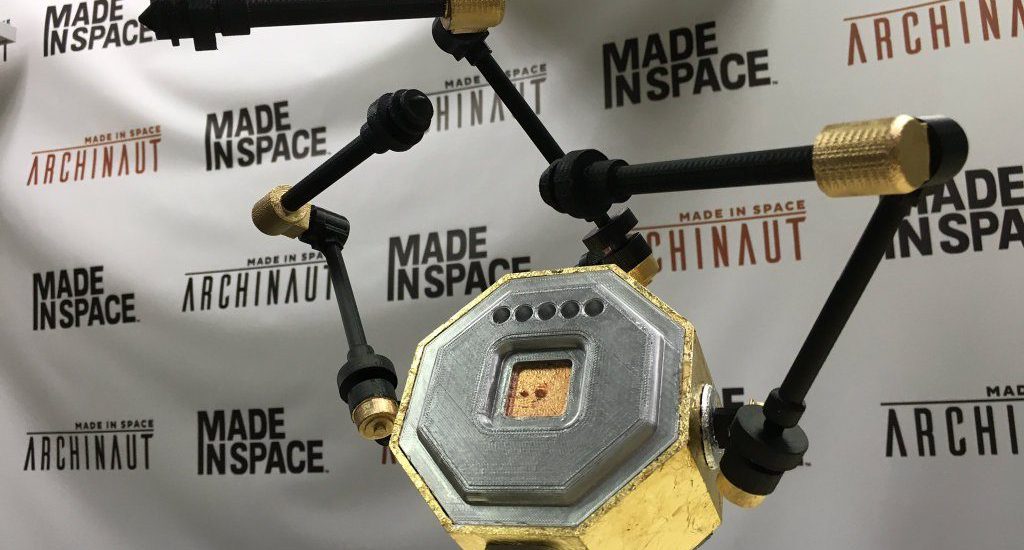NASA Awards Millions to 3D Printing Projects for 2024 Moon Landing Support
- July 4, 2019
- Posted by: Chase Gregory
- Categories: Emerging Technology, Manufacturing

NASA’s recently secured funding of over $43 million for approximately 18 early-stage 3D printing projects, developed by various small and innovative businesses across the US. The aim of the projects is to support NASA’s forthcoming mission to the Moon, which is part of the Moon to Mars directive. The agency’s Small Business Innovation Research (SBIR) and Small Business Technology Transfer (STTR) seed programs run both funding programs in three phases.
In Phase I, the developers provide a sound basis for their idea. In Phase II, the awardees continue to develop their concepts to a level almost ready for commercialization. Finally, in Phase III, businesses are tasked with the commercial realization of their product. The objective of the latest program is to help NASA remain at the cutting edge of new technologies, enabling it to choose the best possible solutions.
The primary goal of the Moon to Mars approach is to create a habitat that can sustain life on the Moon, allowing astronauts to continue their exploration of the galaxy. It is incentivized by President Donald Trump, and the ultimate goal is to return astronauts to the Moon by 2024. NASA Administrator Jim Bridenstine has said, “This time, when we go to the Moon, we will stay. And then we will use what we learn on the Moon to take the next giant leap – sending astronauts to Mars.”
The projects granted funding under SBIR and STTR programs are tasked with providing solutions to help NASA achieve its Moon to Mars objectives, including in-space propulsion technologies, power and energy storage, in-situ resource utilization, in-space and advanced manufacturing and materials, materials research, and structures and assembly. The technologies show great promise in helping NASA achieve its objectives across all mission areas, including efforts to send American astronauts to the Moon, and then on to Mars, while also providing a long-term boost to the American economy.
One of the well-known companies in low-gravity fabrication is Made In Space (MIS), which was the first company to place a 3D printer on the International Space Station (ISS). Since the launch of its Additive Manufacturing Facility (AMF), the company has been involved in several varied and larger-scale fabrication projects, including the satellite-building Archinaut. As an awardee of the 2019 Phase I SBIR & STTR round, the organization will be conducting another project for NASA, this time developing a Mobile End-effector Laser Device (MELD) capable of autonomous joining and repair.
The primary advantage of 3D printing in space is that it reduces the weight and size of the materials required for space exploration. It enables the printing of spacecraft parts and tools in space, saving resources and time that would otherwise have been used to transport them from Earth. For example, NASA has been conducting experiments in 3D printing using lunar and Martian regolith that have demonstrated the rudimentary potential to build habitats. NASA’s own 3D Printed Habitat Challenge has been seeking ideas to help build shelter.
Another benefit of 3D printing is that it enables the creation of complex structures and shapes that would be challenging or impossible to manufacture using traditional manufacturing methods. This advantage is especially important for space exploration because astronauts may encounter challenging environments that require innovative solutions. For instance, NASA has been seeking ways to make better use of waste generated by habitable satellites like the ISS.
The growing popularity of 3D printing has enabled the creation of new technologies in various industries, including the manufacturing sector. Many manufacturers are now using 3D printing to produce parts and tools, improving their efficiency and productivity. The ability to create complex structures using 3D printing has also opened up new possibilities for the design and production of various products.
In conclusion, NASA’s SBIR and STTR funding programs provide vital support to small businesses that drive innovation in technology and manufacturing. With the latest round of funding supporting 18 3D printing projects, the agency is investing in new solutions that could help fulfill its Moon to Mars objective.
As the space exploration field continues to seek ways to keep astronauts in space for longer and create habitable environments on other planets, 3D printing is proving to be a valuable tool for building habitats and infrastructure. The future of space exploration is exciting, and with continued investment in emerging technologies, we can expect to see even more incredible advancements in the years to come.

